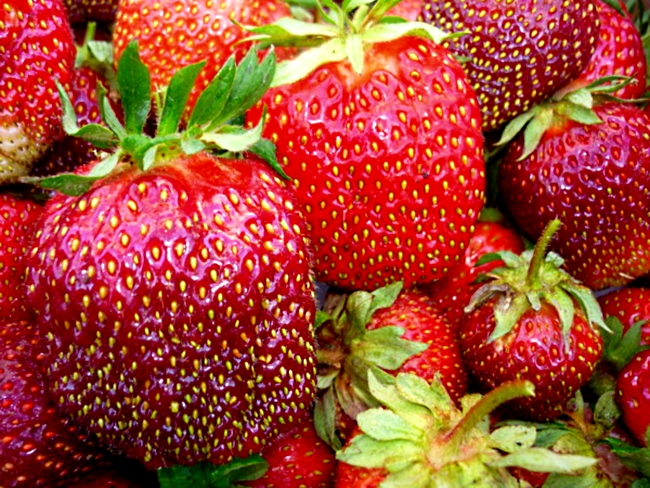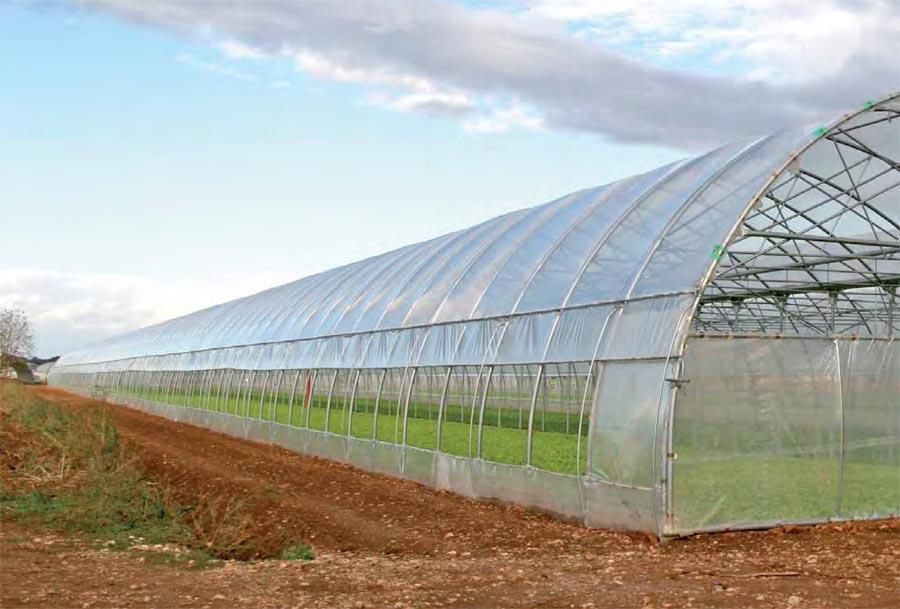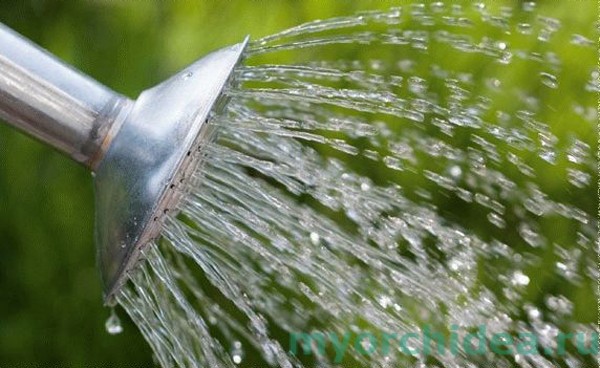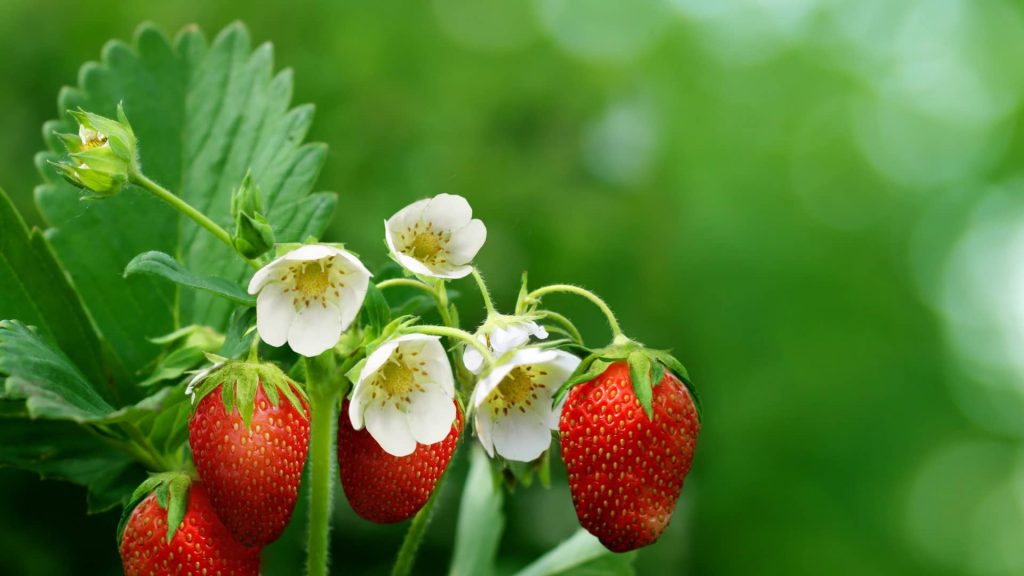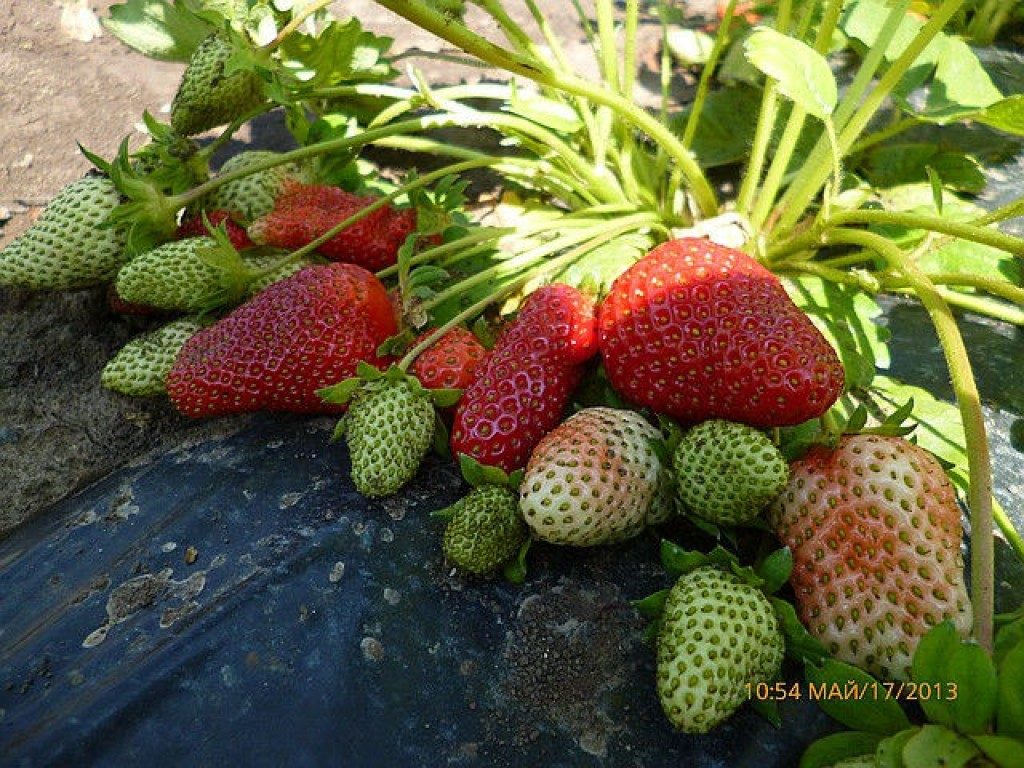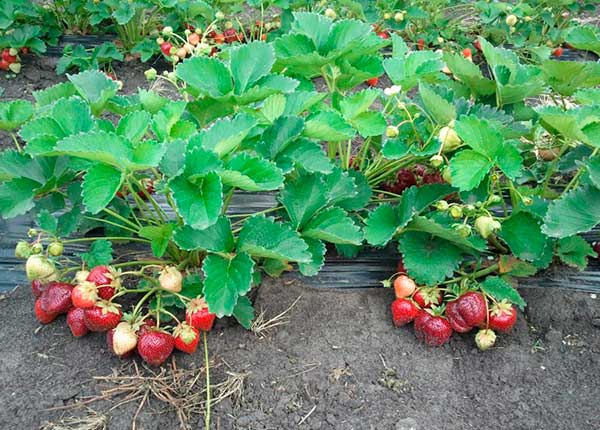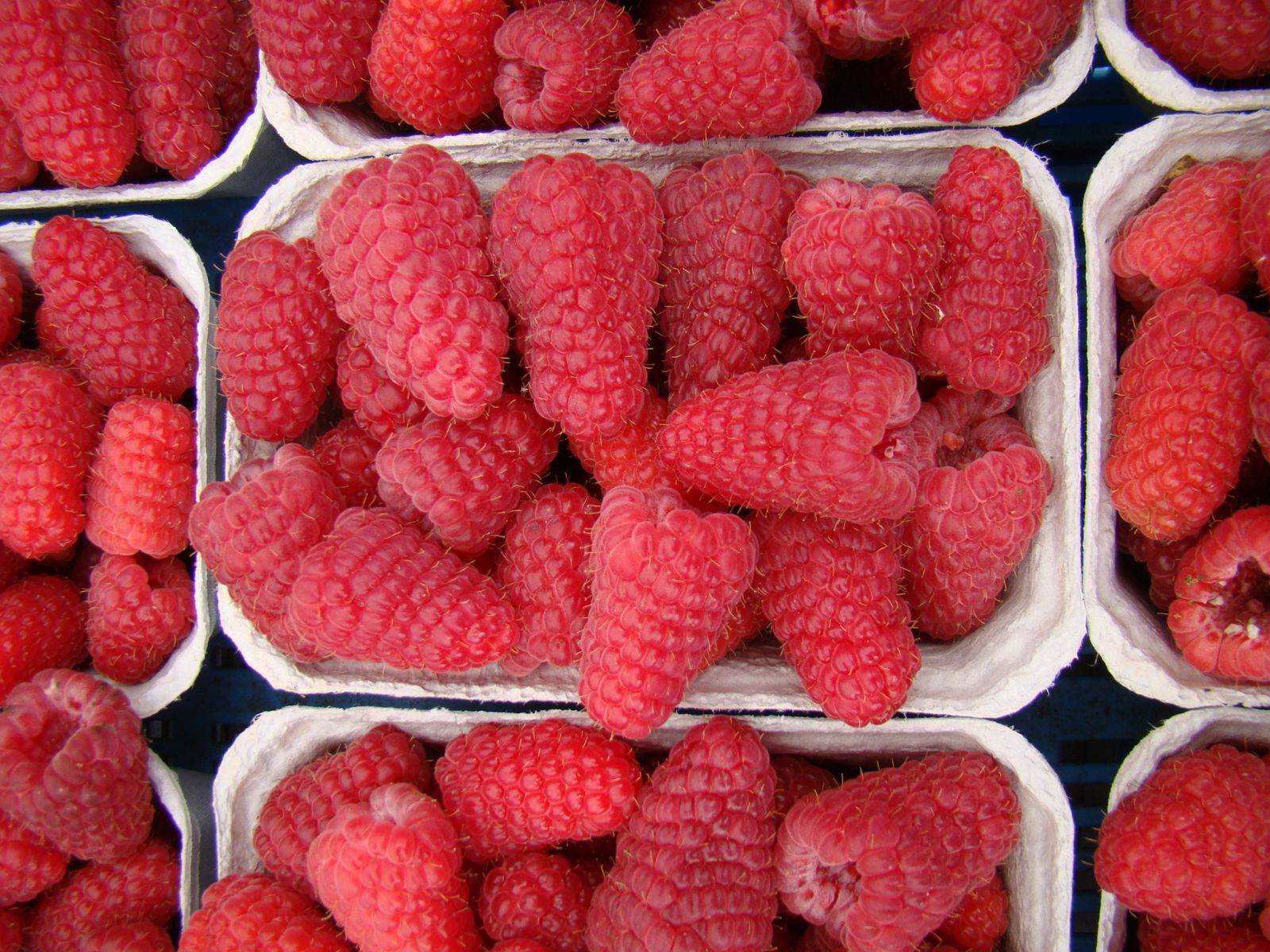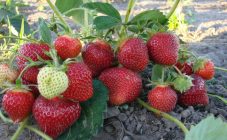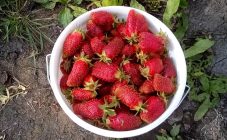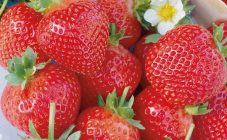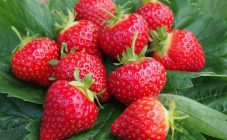Content:
The unique ability of remontant strawberry varieties to re-bloom and bear fruit at the end of summer has brought it immense popularity among gardeners. Fragrant berries are not only very tasty, but also healthy. They have a high content of vitamins (PP, beta-carotene, A, C, B1, B2, B5, B9, B6, E, H), macronutrients (calcium, magnesium, sodium, potassium, chlorine, sulfur), trace elements, organic acids (folic, pantothenic), mono - and disaccharides.
Description of culture
Strawberries (Fragaria) means fragrant. It is a perennial herb from the Rosaceae family. Wild representatives of the strawberry genus have appeared since the time of dinosaurs in East Asia.
Leaves of complex shape, up to 10 cm high. Shoots are long, creeping, self-rooting. The root is fibrous, grows at a depth of 25 cm. Flowers are bisexual, pollinated by insects. The petals are white along the edges, and in the middle there are many pistils and stamens. The fruits are false berries. On the surface of the juicy receptacle there are many small nuts - brownish seeds.
The strawberry genus has a complex botanical structure. The repair strawberry, which bears fruit all summer, due to its unusual ability to lay buds for flowering with long daylight hours and high air temperatures, belongs to Fragaria ananassa and Fragaria vesca.
In culture, there are 2 types of remontant strawberries:
- large-fruited, bred by selection of non-remontant varieties of Fragaria ananassa, pineapple strawberry, which is often called strawberry. Berries can be from 40 to 100 g;
- small-fruited, derived from Fragaria vesca, wild strawberry. Berries grow as much as possible from 5 to 30 g. Small-fruited strawberries are most often grown without a mustache. This makes it possible to plant bushes more densely and harvest more crops.
Small-fruited strawberries differ in the planting method:
- with the help of a mustache (Sakhalin, Seasons, White Lotus);
- dividing a bush or seeds (Baron Solemacher, Rugen, Ruyana, Renaissance, Cinderella, Ali Baba, San Andreas, Koketka).
And also the color of the berries:
- red (Alexandria, Ruyana, Baron Solemakher, Crimean early);
- white or cream.
Moreover, white is divided into:
- varieties that reproduce with a mustache (White Lotus, Zolotinka, Yellow miracle);
- varieties that do not give a mustache (Snow White, Yellow Wonder).
Also, all remontant strawberries can be divided into 2 groups that form fruits depending on the daylight hours:
- varieties of long daylight hours (more than 10 hours);
- varieties of neutral daylight hours (bear fruit under any period of illumination).
Remontant strawberries: varieties for the middle lane
- Selva. It belongs to the early varieties of large-fruited remontant strawberry. The berries are dark red, dense, weighing up to 50 g, the taste is sweet with a slight sourness. The bush is powerful but compact. Gives a lot of mustache per season. Fruiting occurs in waves 3-4 times a season due to the rooting of young rosettes. It is characterized by high yields for 3 years, after which the plantings need to be renewed. Winter hardy.
- Tristar. The bush is compact, gives a lot of whiskers, which begin to bear fruit when rooting. The berries are large, deep red, weighing up to 40 g, sweet. Well transported.
- Tribute. A small shrub that allows for tighter plantings. Gives a lot of mustache. The berries are large, weighing up to 40 g, sweet. Drought-resistant and frost-resistant.
- Queen Elizabeth. Refers to early varieties of a neutral day. The flowers are bisexual, without barren flowers. Berries are bright red, weighing up to 60 g, sweet taste. During the season, it gives a small amount of whiskers, which immediately bear fruit. The productivity of 1 bush is 2 years.
- Elizabeth 2 is obtained from the Queen Elizabeth variety. The variety is distinguished by its large-fruited and high yield. The weight of one berry can reach 100 g. Suitable for growing in the Moscow region.
- Albion. An early maturing variety of neutral daylight hours. The berries are bright red, weighing up to 50 g, the taste is very sweet and fragrant. Well transported. Bears fruit 3-4 times per season. The variety is not frost-resistant, requires shelter for the winter. Albion is resistant to late blight and anthracnose. Produces a small amount of whiskers that are best removed for better yields.
Small-fruited remontant strawberries: the best varieties formustache breeding
- White Lotus. The bush is small, compact. White berries with yellow seeds weighing up to 5 g. Sweet, dessert taste. Gives many rosettes, which begin to bear fruit, without having time to take root. The variety is resistant to disease. Berries are poorly transported and stored. Harvesting from May to November. Early ripe.
- Sakhalin also belongs to the early maturing. Berries are light red, weighing up to 20 g. The variety is winter-hardy, drought-resistant. Yields a harvest until frost. The bulk of the berries falls on the second fruiting.
- Seasons. High-yielding variety. The weight of one berry is up to 10 g. The taste is bright, aromatic and rich. The application is universal. Suitable for planting in pots.
Agrotechnics
For growing strawberry garden remontant varieties use:
- open ground;
- hanging pots;
- greenhouse.
You can extend the life of one bush through proper agricultural technology and care.
Seat selection
Strawberry remontant gives a good harvest in the first 3 years of life. Then you need to change not only the planting material, but also the planting site in order to protect new seedlings from diseases and pests that have accumulated in the soil during this time. The area should be level, well-lit and well-drained. Loamy or sandy loam soil is ideal. When choosing a place, you need to focus on previous landings:
- good predecessors are carrots, garlic, legumes, beets and bulbous flowers;
- bad predecessors are cabbage, cucumbers, potatoes and raspberries.
Preparation and landing
It is best to plant strawberries in open ground in the fall. This will give the plants time to root and develop. In spring, it is good to plant seedlings in a greenhouse and in hanging pots.
2 weeks before the autumn planting, the soil is dug up, weeds are removed and fertilizers are applied. A mixture of compost (1 bucket), ash (5 kg), potassium sulfate (20 g), superphosphate (40 g) is applied to 1 m² of soil. The plot is well watered so that the fertilizers are dissolved in the soil.
The strawberry planting scheme depends on the size of the plot. The most popular method is a 2-line tape. Plants are planted on an elevated hillock, this is especially true for Siberia and the Urals, to remove excess moisture.
The seedlings are placed in the hole so that the growing point is above the ground, and the roots are freely distributed in the hole.There should be a distance of 30 cm between the plants.
Watering
After planting seedlings, they need to be watered every day until they take root. After that, watering can be halved.
Strawberries need a lot of moisture during flowering and fruiting. The soil must be constantly moist. Watering can be done every day during dry seasons. One bush requires 1.5-2 liters of water.
Watering is at the root. After watering, it is advisable to mulch the soil. Loosen the aisles so that air penetrates to the roots of the plant.
If the soil is dry, then it is first recommended to loosen it, and then water it.
Top dressing
For abundant fruiting, remontant strawberries need to be fertilized all season. This should be done strictly in stages.
- Spring feeding is carried out in March. After cutting off old leaves, fertilizers containing nitrogen (nitroammofoska), or organic solutions of mullein, chicken manure are applied.
- During flowering, the plant is fed with potassium fertilizers (potassium nitrate, zinc sulfate, boric acid). Top dressing can be applied both under the root and by spraying the leaves of the plant.
Top dressing is carried out once a week, without combining various types of fertilizers. After flowering, feeding is stopped until the end of the harvest. They can be renewed in summer, when the second phase of flowering begins.
Before winter rest, plants are fed with potash fertilizers.
Reproduction
The mustache breeding method is the simplest and most affordable, but not all types of remontant strawberries produce shoots with rosettes.
To increase the planting material, healthy, strong shoots with rosettes, which were formed at the beginning of the growing season, are taken from the mother bush. The rest of the mustache must be constantly removed. You will also have to give up the summer and autumn harvest. To do this, after harvesting the first harvest, all flowers are removed on the bush selected for propagation. This is necessary so that the seedlings can gain strength and take root.
Then shallow grooves are made around the bush and a mustache is laid in them. Also, sockets can be immediately planted in small containers.
The rooted mustache is separated from the mother bush 2 weeks before transplanting to a new place. If it grew in the ground next to the main bush, then it is carefully separated and dug up, and then planted in a container.
How to plant strawberries by dividing a bush
You can propagate a strawberry by dividing the mother bush. This method is used for varieties that do not produce whiskers. The division is best done in the fall. During the season, the bush will grow. From one point of growth, a dozen healthy processes can be obtained. They can be planted immediately in a permanent place or in a greenhouse if there are a lot of them and their roots are weak.
Diseases and pests
Many mustachioed and mustacheless varieties of remontant strawberries are quite resistant to various fungal infections, such as:
- gray rot covering the berries with a white bloom;
- powdery mildew, which affects the leaves of the plant, which curl up and become brown;
- brown spot spoiling strawberry leaves.
Of the insect pests, the most dangerous are strawberry mites, nematodes, and aphids.
To grow healthy bushes and protect them from the invasion of diseases and pests, you need to regularly treat with insecticides, drugs that suppress fungal spores, monitor the cleanliness of the row spacings and correctly place strawberry bushes in the garden.
Garden remontant strawberry is the first spring berry that ripens outdoors. It can also be grown at home in a hanging planter or on a windowsill. The versatility of this delicious berry allows you not only to enjoy fresh strawberries in spring and summer, but also to cook aromatic strawberry jams and compotes or freeze fresh berries. It is very difficult to choose among the huge number of varieties that will give the greatest yield on the personal plot. It is best to plant several varieties to provide a home harvest throughout the season.
